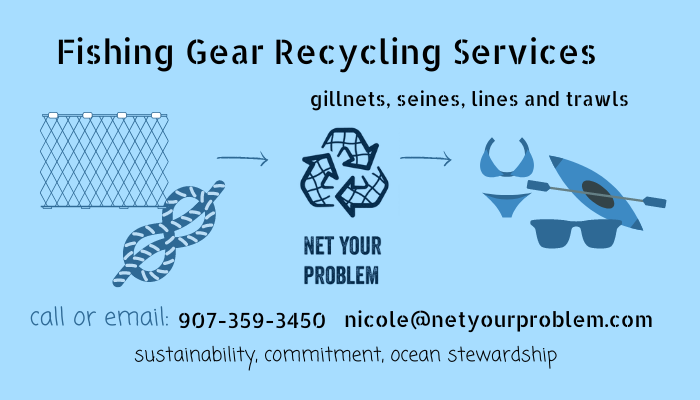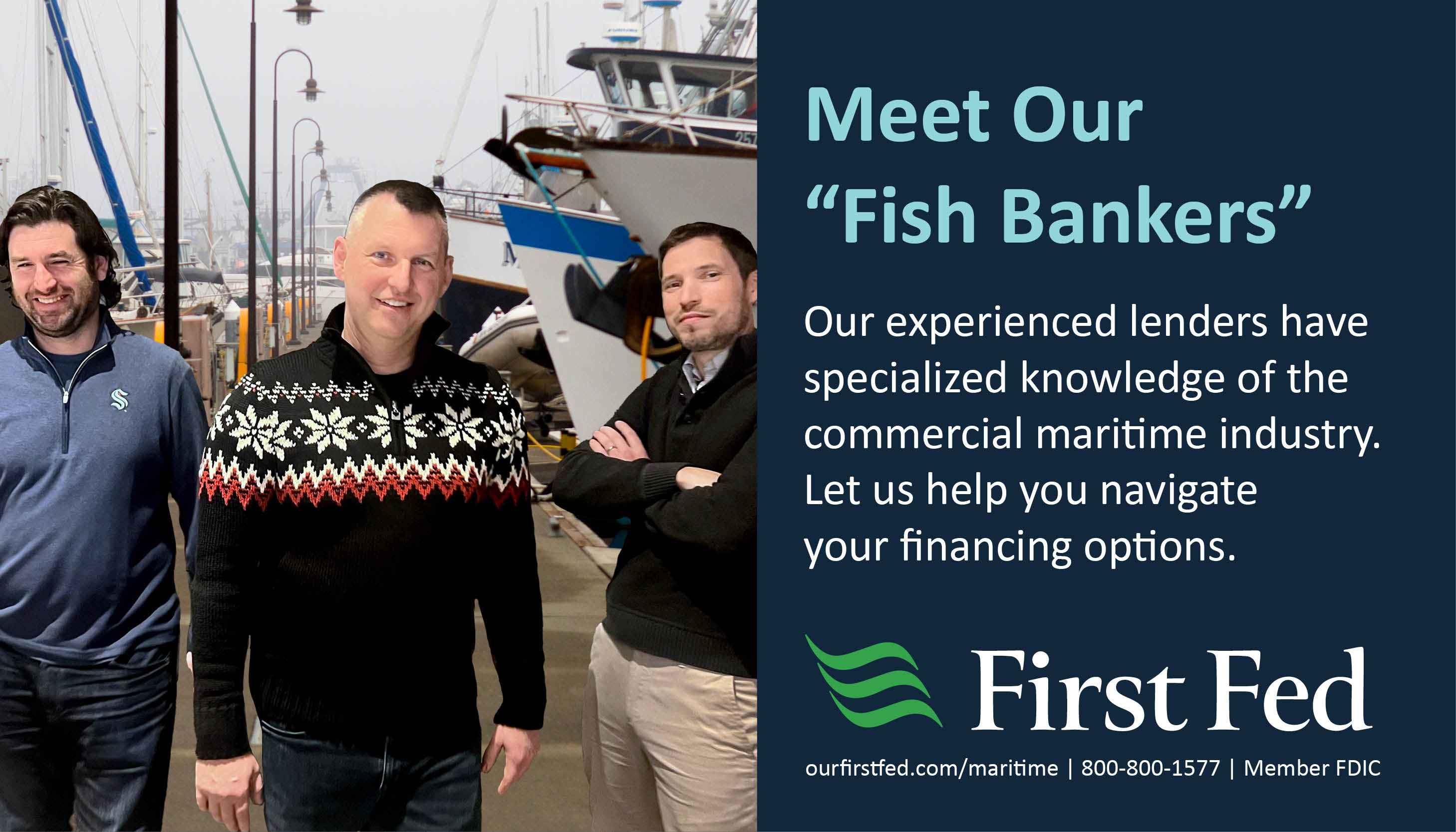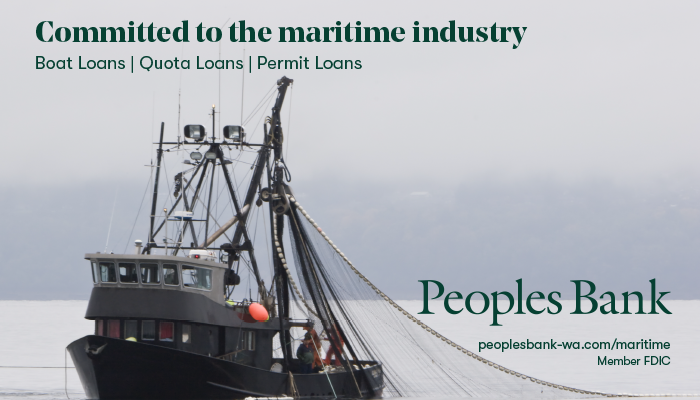Fish Factor by Laine Welch
March 5, 2021
It’s likely that no other fishing regions of the world reach out for stakeholder input as much as Alaska does to gather policy-shaping ground truth by state and federal managers and organizations.
That’s demonstrated by two new surveys – one which aims to quantify how much Alaska fishermen and processors paid out over the past year to lessen Covid impacts and how much relief they got from government programs; the other to learn what technology needs are tops with harvesters.
The Alaska Seafood Marketing Institute is collecting information not available elsewhere on the pandemic impacts.
Processors are being asked about financial losses due to Covid mitigation efforts, plant closures and employment changes, as well as their expectations for costs and employment levels in 2021, explained Jenna Dickinson, a consultant with the McKinley Research Group who is working with ASMI on the project. Processor costs include but are not limited to charter flights and hotel put-ups for worker quarantines, plant modifications, medical and testing supplies and related services.
Many fishermen also paid for similar coverages for their crews.
“We are similarly asking permit holders about the financial impacts of the pandemic, their hiring levels in 2020 compared to 2019 (pre-Covid), their estimates for anticipated costs in 2021, and whether the pandemic has caused them to sell or buy permits, boats or other assets, reduce crew, stop fishing entirely or make other changes to their fishing operations,” she explained.
Both processors and fishermen also are being asked whether Covid relief payments covered their 2020 losses, Dickinson added.
Data from the surveys, which will be revealed by early May, will be used to provide policy makers and other stakeholders a clear picture of the condition of the industry one year into the pandemic.
The surveys are open through March 18. Find both at www.alaskaseafood.org under Announcements.
Also, as part of ASMI’s ongoing work with McKinley to understand and report on Covid impacts on Alaska’s seafood industry, a series of briefing papers is available at the ASMI website. The January brief, for example, describes Covid impacts to global freight costs, how a surplus of frozen farmed salmon causes uncertainty for wild salmon markets, and anticipated hits to tax revenues for coastal communities in 2021.
Questions? Contact Ashley Heimbigner at [email protected] or Jenna Dickinson at jdickinson@mckinleyresearch.
Top tech needs – Another survey by Seafood Harvesters of America (SHA) asks U.S. fishermen to help identify technology priorities that can be scaled up to benefit all users.
“This survey rose out of the recognition that the fishing industry needs a lot of advancements in the technology department,” said Leigh Habegger, SHA executive director. “A lot of times we see vessels using technology that's 10 to 15 years old and they haven't really caught up with all the advances. Another part of this is that it's not always clear how technology can be applied to fishing vessels as they are very unique platforms,”
“There's so much automation going on in terms of sensors that are uploading automatically to the cloud, and data centers in general are getting a lot more sophisticated and better able to predict where fish are to reduce bycatch, fish more efficiently and treat our product better. These are all things that are very possible with the current technology that's out there,” agreed Edward Poulson, SHA vice-president and a spokesman for Alaska Bering Sea Crabbers. “But being in the fishing industry, we're pretty conservative. We know what works and we're not super excited about trying things that we don't know. That kind of keeps us more firmly footed in the 20th century instead of the 21st century.”
“A lot of the technology innovations in terms of deck machinery, sorting tables, launchers, coiling machines, those are all things that were developed in the ‘70s and we're still using that stuff,” Poulson added. “There's been very little in terms of change but I think there are a lot more opportunities.
Broadly scaling tech advances also is a big challenge to make them cost effective for developers, Poulson said, and something designed for a specific problem or region can mean the user group is too small.
“If a tech company is designing something that is only going to be used for something difficult to build like an automated pot hauler, that's super expensive and really hard to scale. You're not going to have the market opportunity to amortize that over a lot of boats to build a big profit potential for a technology company,” he explained. “However, if you can show that there's a lot of other fishing vessels in the U.S. that have some similar sort of a need, then all of a sudden technology companies have a lot larger interest.”
“We have fishing groups as members all over the country so we can start to identify patterns,” Habegger added. “Maybe folks who are using fixed gear pots in New England might have some similarities with the Dungeness crab fishery on the west coast. And there may be a solution to address whale entanglements across both of these fisheries versus trying to do this piecemeal.”
The short survey includes tech advancements in four areas: sustainability, such as bycatch reduction and gear selectivity; safety; productivity, such as robotics and hybrid engines; and data usages and platforms.
SHA hopes to gather responses by the end of May. A priority list and a report will follow along with plans to bring fishermen, tech developers and fishery managers together this fall to move conversations forward. Find the Fisheries Technology Survey at www.seafoodharvesters.org/our-
Fishy appointee - Another of Governor Mike Dunleavy’s fishery appointments has raised eyebrows among stakeholders.
Melvin Smith, an Anchorage real estate executive formerly with the Aleut Corporation, will take a lead seat at the Commercial Fisheries Entry Commission, which regulates fishing permits and vessel licenses across Alaska. The job comes with a six figure salary.
The appointment was not announced nor advertised. Coast Alaska reported that Smith’s name surfaced when it was sent to the state Senate for consideration by lawmakers.
Dunleavy “believes he’s the best candidate,” spokesman Jeff Turner told Coast Alaska.
Fisherman and former lobbyist Bob Thorstensen added it’s customary for someone close or loyal to the governor to be tapped for commissioner jobs.
“Whoever gets that job is usually a pretty good friend of the governor’s people because it’s a choice job,” he said.
The CFEC’s next big task is to determine the right number of permits in various limited entry fisheries, which was originally based on historical participation and may not be the optimum number for a fishery or region.
Community grants – American Seafoods is calling for grant applicants from Kodiak Island, the Aleutian and Pribilof Islands and Western Alaska Peninsula, Bristol Bay, the Lower Kuskokwim, Lower Yukon, Norton Sound and regions north. The majority of each grant award will range from $1,000 to $7,500 for projects addressing food security and community social needs. Recipients will be selected by an advisory board on April 28, 2021. The deadline to submit applications is April 12.
Fill out an application here or contact Kim Lynch [email protected]
Find more at www.alaskafishradio.com






